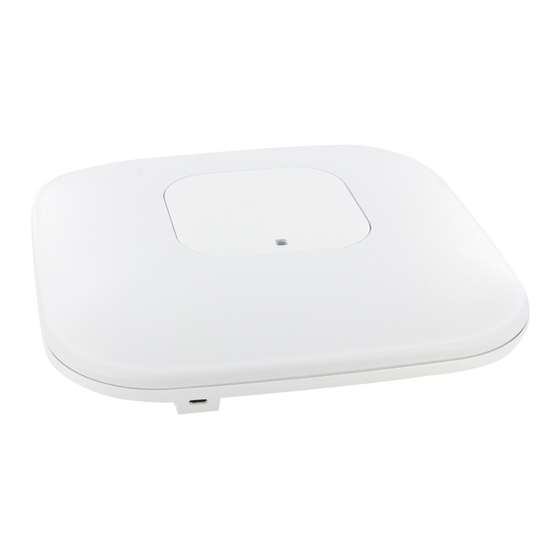Cisco WS-C3550-12G Datenblatt - Seite 7
Blättern Sie online oder laden Sie pdf Datenblatt für Drahtloser Zugangspunkt Cisco WS-C3550-12G herunter. Cisco WS-C3550-12G 19 Seiten. 3500 series lightweight access point
Auch für Cisco WS-C3550-12G: Handbuch "Erste Schritte (35 seiten)

Feature
Benefit
PVST+ allows for Layer 2 load sharing on redundant links to efficiently utilize the extra capacity inherent in a
redundant design.
IEEE 802.1s Multiple Spanning Tree Protocol (MSTP) allows a spanning tree instance per VLAN enabling Layer 2
load sharing on redundant links.
Equal cost routing for Layer 3 load balancing and redundancy
Local Proxy ARP works in conjunction with private VLAN edge to minimize broadcasts and maximize available
bandwidth.
VLAN Trunking Protocol (VTP) pruning limits bandwidth consumption on VTP trunks by flooding broadcast traffic
only on trunk links required to reach the destination devices.
IGMP snooping provides for fast client joins and leaves of multicast streams and limits bandwidth-intensive video
traffic to only the requestors.
Multicast VLAN Registration (MVR) continuously sends multicast streams in a multicast VLAN while isolating the
streams from subscriber VLANs for bandwidth and security reasons.
The Cisco GigaStack GBIC delivers a hardware-based, independent stacking bus with up to 2 Gbps forwarding rate
Ultra-Flexible and
in a point-to-point configuration, or 1 Gbps forwarding bandwidth when daisy chained with up to nine switches.
Scalable Stacking
Auto-configuration eases deployment of switches in the network by automatically configuring multiple switches
Ease of Use and
across a network via a boot server. Automatic QoS (Auto QoS) greatly simplifies the configuration of QoS in VoIP
Ease of Deployment
networks by issuing interface and global switch commands that allow the detection of Cisco IP phones, the
classification of traffic, and egress queue configuration.
Auto-sensing on each non-GBIC port detects the speed of the attached device and automatically configures the port
for 10-, 100-, or 1000-Mbps operation, easing the deployment of the switch in mixed 10, 100, and 1000BASE-T
environments.
Auto-negotiating on all ports automatically selects half-or full-duplex transmission mode to optimize bandwidth.
Dynamic Trunking Protocol (DTP) enables dynamic trunk configuration across all ports in the switch.
Port Aggregation Protocol (PAgP) automates the creation of Cisco Fast EtherChannel or Gigabit EtherChannel
groups, enabling linking to another switch, router, or server.
Link Aggregation Control Protocol (LACP) allows the creation of Ethernet channeling with devices that conform
to IEEE 802.3ad. This is similar to Cisco's EtherChannel and PAgP.
DHCP relay allows a broadcast DHCP request to be forwarded to the network DHCP server.
IEEE 802.3z-compliant 1000BASE-SX, 1000BASE-LX/LH, 1000BASE-ZX, and 1000BASE-T physical interface
support through a field-replaceable GBIC module provides customers unprecedented flexibility in switch
deployment.
The default configuration stored in Flash ensures that the switch can be quickly connected to the network and can
pass traffic with minimal user intervention.
Important notices, privacy statements, and trademarks of Cisco Systems, Inc. can be found on cisco.com.
© 2005 Cisco Systems, Inc. All rights reserved.
Page 7 of 18
